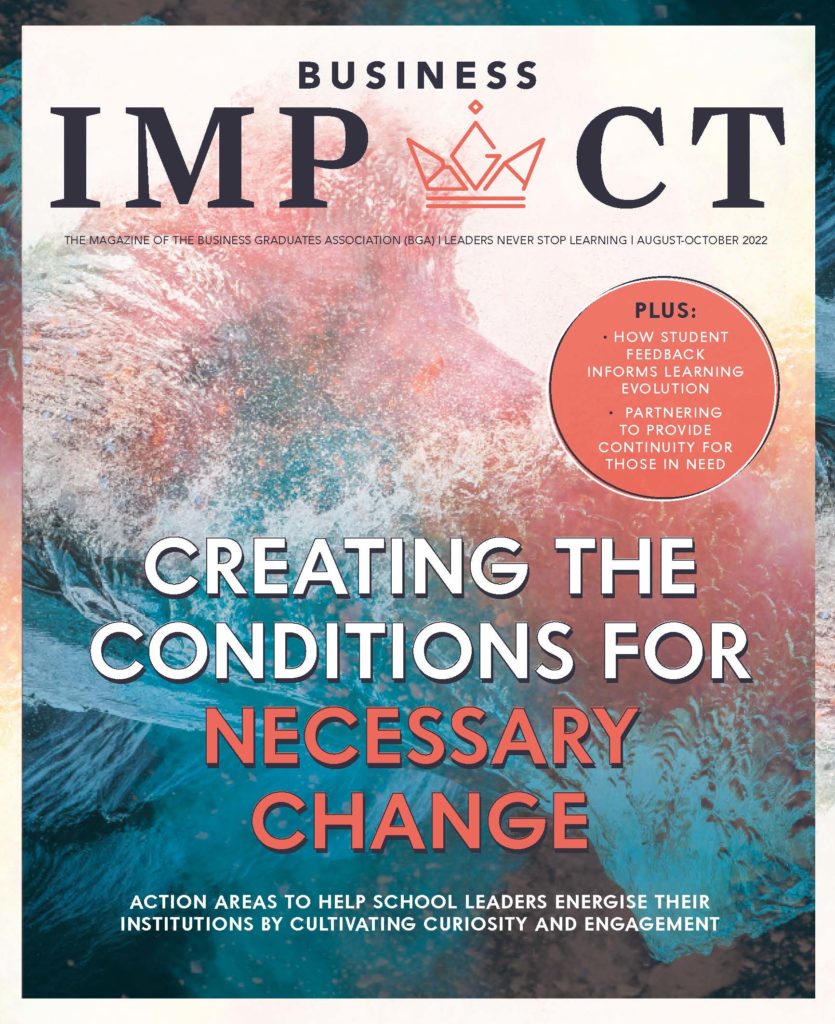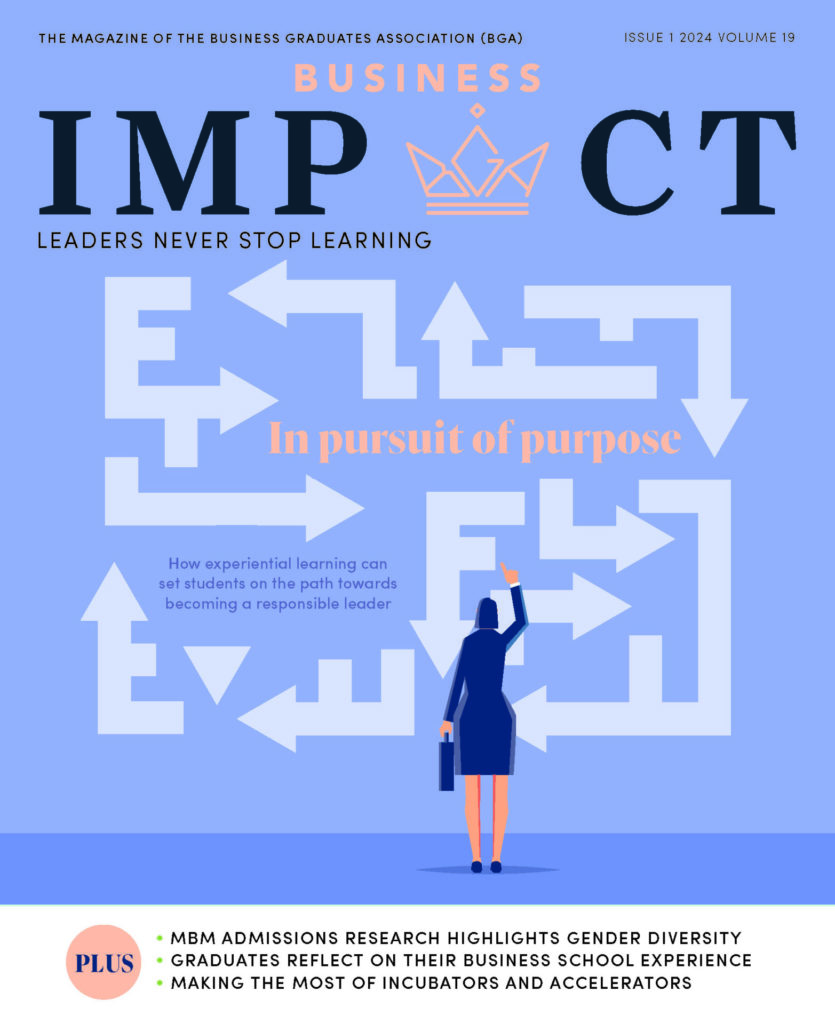The pandemic and its related consequences call for novel business school content, structures and impact. How can leaders respond? A good place to start this transformation is by revisiting the three elements of content, methodology and impact (see Creating cultures of change, part II for more details) using a future focus and asking ourselves what might be possible.
Content: From ‘sage on the stage’ to ‘shared learning solutions’
Learners will always need the wisdom of the expert at the front of the room. However, they now also want challenge and ‘meaning-making’ rather than merely the passive absorption of facts. Educators can experiment with content and styles that include dialogue and facilitation, panels, group-work, ideas exchanges, experiential learning, off-campus visits to widen perspectives, debriefs and meaning-making, and practical application of new ideas to real work.
New learning content topics might also include: business model disruption; emerging value chains; big data and AI; ESG; sustainability; and the future of work. Creativity, innovation and the broader value of DE&I in business are also hot topics.
One example of these new methods is London Business School’s Horizon Scanning Forum which pairs students with external leaders around a focused strategic question (for example, ‘how can we diversify our customer base to capture millennials?’ or ‘how can we engage and retain a diverse and remote workforce?’). The ensuing debates and sharing of experiences equalises the older learner-teacher dynamic as groups make sense of issues through exploration and dialogue. Hybrid and virtual structures lend themselves very well to these new methods as leaders interact across timezones, industry sectors and professions.
Methodology: From ‘unidirectional knowledge transfer’ to ‘smart hybrid’
To reverse the old one-way learning model, the key is to inject dialogue, meaning-making and application into the process. Optimising physical and virtual learning is also key. For example, small groups can work offline to share ideas, while coaches or tutors can engage in deeper debates on a topic. Alternatively, mixed learner cohorts (for example, from different class years or programmes) can cumulate their shared knowledge and directly drive innovation back in their companies. So-called ‘digital assets’ can be created by educators, experts, business leaders and students themselves as they share ideas and case studies. Technology can capture best practices and AI can match data to learner needs over time to supplement faculty content.
These flexible learning mechanisms can include simple and well-planned experiments, immersion, panel conversations and TED-style formats that further customise learning and democratise knowledge and insight across learning topics and student groups.
Impact: From ‘linear learning’ to ‘strategic ROI’
With a tighter economy and scarcer resources in many sectors, students and their sponsors are making more selective trade-offs about where to invest in talent development.
Students are also looking for closer alignment between what they gain from a business school and how they have impact in their roles. Making invested development dollars drive business outcomes requires new metrics beyond traditional Kirkpatrick levels [based on the renowned model for analysing and evaluating the results of training and educational programmes] towards longer-term, measurable change. Business schools can up their game by co-creating impact dashboards that measure business and behavioural change, post-programme. Even for open programmes, like MBAs, metrics can track individual change through application of learning, innovation, promotional rates, salary increases, and career development.
Strategic ROI for business schools themselves is also important, and can start with investments in learning capacity, such as partnerships and ecosystems. As an example, LBS currently partners with Singapore Management University to create immersive learning experiences for African multinationals. Schools can also embrace their rivals, and partner to create value. One recent example is the ‘Learning Aggregator’ platform, Emeritus, which has partnered with MIT Sloan, Wharton, Kellogg and Cambridge, among others, to handpick content and aggregate it into new custom programmes. Such ecosystems and partnerships offer broader content, add relevance and can even help reach new markets like India and China with large potential student populations.









